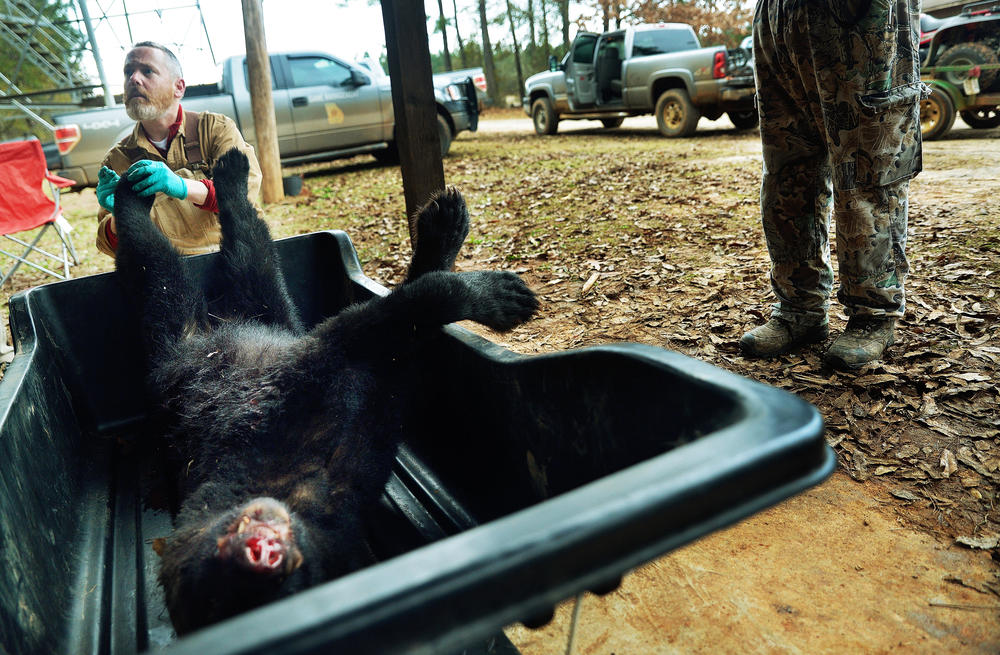Section Branding
Header Content
Only One Bear Taken In One-Day Middle Georgia Hunt
Primary Content
Georgia has bears in the mountains to the north and in the swamps in the south, but there’s also a small population in the middle of the state, about 400 in total.
Once a year, for a single day, hunters have a chance to take a bear from the middle of Georgia.
This year the season only netted a single bear, a male around 240 pounds. That’s small for a male bear, which means this one was likely young.
The Georgia Department of Natural Resources limits the hunt to one day in accordance with guidelines set by University of Georgia biologists for preserving the small population. What would make them worry is if a number of more reproductively important females had been killed.
Hunting is not the greatest hazard for bears in the stretch of swampy woods along the Ocmulgee River in central Georgia. Georgia DNR’s Bobby Bond said this year, as in most years, more bears were killed by cars than guns.
“I think we've got 11 or 12 this year,” Bond said of the number of road killed bears. “But that's really not a huge year. Our biggest years, we've had a couple of years at 17 or 18.”
Bond said most of those deaths occur on U.S. Highway 29 near where it intersects Ga. 96 near the town of Tarversville in Twiggs County.
Bond said you can add in two more animals known to have been poached. Still, he said the deaths are not enough to endanger the longterm sustainability of the bear population in central Georgia.
The next one day season is scheduled for December of 2020.


